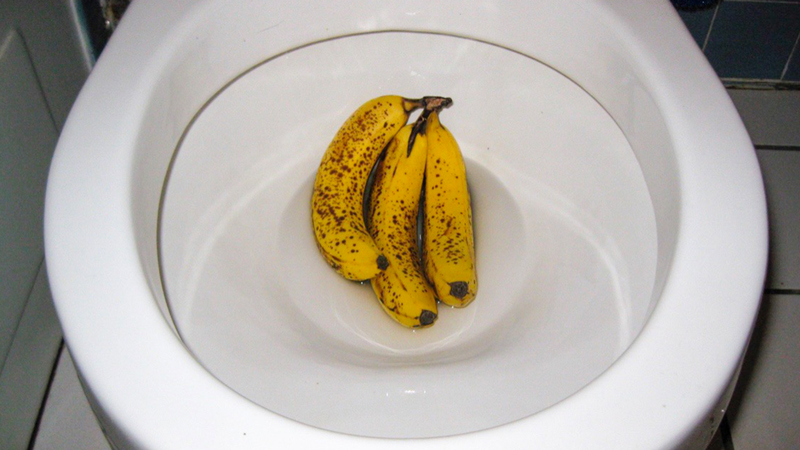Is it Feasible to Flush Food in the Toilet?
Is it Feasible to Flush Food in the Toilet?
Blog Article
The content which follows involving Flushing Food Down the Toilet? is relatively entertaining. Don't miss out on it.

Introduction
Lots of people are usually faced with the dilemma of what to do with food waste, specifically when it involves leftovers or scraps. One common question that emerges is whether it's all right to flush food down the toilet. In this post, we'll explore the reasons that people could take into consideration purging food, the effects of doing so, and different approaches for correct disposal.
Reasons individuals might take into consideration purging food
Lack of understanding
Some people may not understand the prospective injury triggered by purging food down the bathroom. They may wrongly believe that it's a harmless method.
Convenience
Flushing food down the commode might feel like a fast and simple solution to dealing with unwanted scraps, especially when there's no nearby trash can available.
Negligence
In many cases, people might just pick to flush food out of sheer negligence, without considering the effects of their actions.
Consequences of flushing food down the bathroom
Ecological influence
Food waste that winds up in waterways can add to pollution and damage aquatic environments. Additionally, the water utilized to purge food can stress water resources.
Pipes issues
Flushing food can cause stopped up pipes and drains pipes, creating costly plumbing fixings and aggravations.
Sorts of food that ought to not be purged
Coarse foods
Foods with fibrous textures such as celery or corn husks can get entangled in pipes and cause blockages.
Starchy foods
Starchy foods like pasta and rice can absorb water and swell, bring about obstructions in pipes.
Oils and fats
Greasy foods like bacon or cooking oils must never be purged down the bathroom as they can solidify and trigger clogs.
Proper disposal approaches for food waste
Utilizing a waste disposal unit
For homes geared up with waste disposal unit, food scraps can be ground up and purged via the plumbing system. However, not all foods appropriate for disposal in this fashion.
Recycling
Specific food product packaging products can be recycled, minimizing waste and reducing ecological influence.
Composting
Composting is an environmentally friendly method to get rid of food waste. Organic materials can be composted and utilized to enhance dirt for gardening.
The relevance of proper waste administration
Decreasing environmental harm
Correct waste administration practices, such as composting and recycling, help minimize contamination and preserve natural deposits for future generations.
Securing pipes systems
By preventing the method of flushing food down the bathroom, home owners can avoid expensive plumbing repair services and keep the honesty of their pipes systems.
Verdict
To conclude, while it may be tempting to flush food down the bathroom for convenience, it's important to understand the possible consequences of this action. By embracing correct waste monitoring practices and disposing of food waste sensibly, people can contribute to much healthier pipes systems and a cleaner setting for all.
FLUSH FOOD DOWN THE TOILET?
FLUSHING FOOD CAN CAUSE BLOCKED DRAINS IN YOUR HOME
All of the plumbing fixtures in your home are connected to the same sewer pipe outside of your home. This outdoor sewer pipe is responsible for transporting all the wastewater from your home to the Council sewer mains. Even small pieces of food that go down the kitchen sink can cause problems for your sewer. It should therefore be obvious that flushing larger bits of food, such as meat, risks a clog in either the toilet itself or the sewer pipes. Flushing greasy food is even more problematic because oil coagulates when it cools, coating the interior lining of your pipes.
THE TOILET IS NOT A BIN
Food isn’t the only thing that people shouldn’t be flushing down the toilet. People use the toilet to dispose of all kinds of things such as tampons, makeup wipes, dental floss, kitty litter and even underwear. Water goes to great lengths to educate residents about the high costs and stress placed on wastewater treatment systems simply from people flushing the wrong stuff down the toilet. It costs taxpayers millions of dollars each year, and homeowners thousands in blocked drain repairs.
FLUSHING FOOD IS A WASTE OF WATER
Flushing food is a waste of our most precious resource - water. In June this year Level 1 water restrictions were introduced to protect water supply from drought conditions. Much of New South Wales continues to be affected by prolonged drought with recent figures revealing up to 97 per cent of the state remains in drought. Depending on whether you have a single or dual flush toilet, every single flush uses between five and 11 litres of water. In the current climate this is a huge amount of water to be wasting on flushing food that should be placed in the bin (or better yet, the compost).
https://www.jabplumbingsolutions.com.au/blog/can-you-flush-food-down-the-toilet

I'm very fascinated with Flushing Food Down the Toilet? and I really hope you enjoyed our entry. Are you aware of somebody else who is fascinated by the niche? Feel free to promote it. I enjoy your readership.
Book With Us Today! Report this page